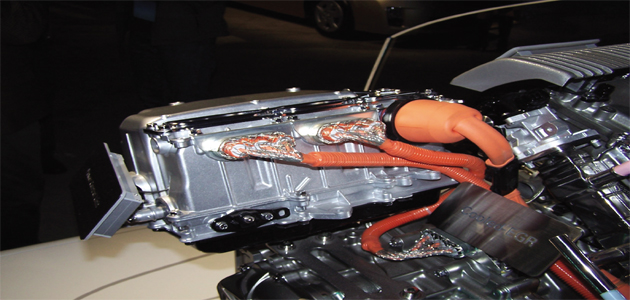
Regulatory demands for better fuel economy and reduced emissions will continue to drive the increase in hybrid vehicles on the road in the future.
In fact, by 2020, it is projected that volumes will nearly triple from the two-million vehicles produced in 2012, so there is no doubt we will continue to see an increase in the number of hybrids entering the aftermarket once the warranty period ends.
Due to the high-voltage circuits contained in most hybrid vehicles, proper service takes on a whole new approach. Improper handling of the hybrid system may result in electrocution and damage to vehicle components, so it is important to closely follow the service procedures found in the approved VM repair manual when servicing these vehicles.
Each hybrid is unique and the proper processes need to be followed for locating/removing or switching off service plugs/switches prior to servicing the vehicle. There are a variety of tools required to help diagnose and service hybrid vehicles.
First, and foremost, a quality diagnostic scan tool is critical for accurate repairs. Additionally, a Category III DVOM is a must for diagnosing high voltage hybrid vehicle circuits. Meters such as the Fluke 1587 allow for insulation testing as well as performing all the other functions of a CAT III meter.

FIVE SAFETY TIPS WHEN WORKING ON HYBRIDS
1. Always wear high-voltage insulated gloves rated to 1,000V (minimum) while diagnosing and servicing hybrid vehicles and systems. Use gloves that are in good condition, even as pinholes, can be very dangerous. One way to ‘method-test’ a rubber glove for leaks is to blow into the glove and hold it tight by squeezing or rolling the open end tight. If the glove has a leak it will deflate.
2. High-voltage circuits are typically identified by bright orange cables or wires. The wiring may also be covered by bright orange covers or conduit. When hybrid vehicles are in a workshop, the vehicle may need to be moved, so it’s important to remember that if you’re rolling a vehicle in the garage, with the drive wheels on the ground, the motor generator may be providing power to these circuits. To avoid this condition, wheel dollies are recommended to move hybrids around the workshop.
3. Always remove all jewellery, including watches, necklaces and earrings, when working on a hybrid vehicle. Metal objects conduct electricity and could be a hazard if it inadvertently contacts a voltage source. You should also wear the appropriate protective clothing (high-voltage rubber gloves, face shield, insulated boots, protective coat or apron) when servicing these vehicles.
4. During diagnosis, do not drive the vehicle when it is in “Service Mode”, as it may damage the transmission or other components of the hybrid system. To reset the vehicle, shut it off and restart.
5. If a hybrid is equipped with a “smart key” system, technicians need to be sure the system is disabled prior to performing any servicing work. When in “Ready Mode”, the engine can start at any time, which could create a safety concern if this occurs during vehicle service.









